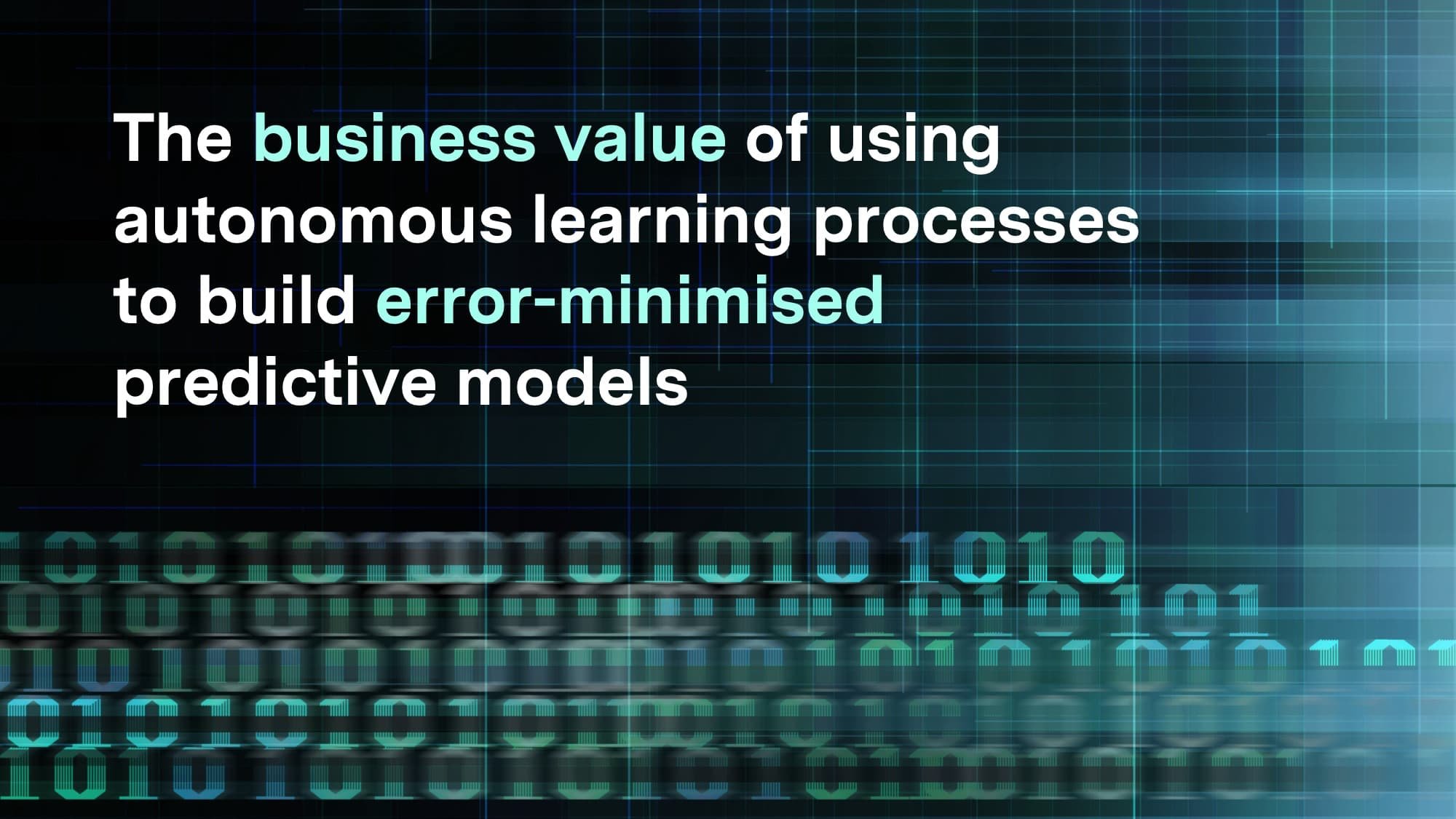Autonomous Learning and Error-Minimised predictive models
The business value of using autonomous learning processes to build error-minimised predictive models
Predictive Models
Today, predictive models are widely used in business for a range of applications, such as forecasting demand, predicting customer behaviour, detecting fraud, scoring customer risks and optimising operations.
The accuracy of these models is crucial to their cost-effectiveness and efficiency in targeting specific business challenges.
Reducing Errors in Predictive Models
Error-minimised predictive models are designed to reduce the number of errors that can occur when predicting future outcomes. These errors can be false positives, false negatives, overestimation or underestimation. These errors lead to mistrust of the data, higher validation costs and possibly to misdirected decision making if based on these errors.
It is therefore crucial to produce optimal error-minimised models and to find the best techniques to produce them. Some modern predictive analytics platforms can autonomously find the most appropriate setup and metrics required to build an optimal predictive model for a given business analysis question. Platforms that use machine learning algorithms and data mining techniques provide a significant advantage compared to platforms that rely on manual modelling. The most effective platforms can also autonomously evaluate different machine learning algorithms, model architectures, and hyperparameters to find the optimal combination that produces the best predictive performance. This automated approach provides the following benefits:
Significant reduction of time and cost to build models. Human intervention is minimised as traditional methods often require extensive preparation and engineering.
Improved accuracy of predictive models with optimal detection rate and the reduction of errors.
Automated learning offers the capability to process multiple factors with enhanced efficiency and testing, thereby allowing organisations to swiftly identify the most suitable fit-for-purpose models.
Elimination of subjective assumptions.
Benefits of Using Autonomous Learning Processes for Error-Minimised Predictive Models
By using autonomous learning processes organisations can achieve highly accurate, error minimised models in a cost effective and efficient way. Having access to error-minimised predictive models, businesses can gain several benefits:
Better decision-making: Error-minimised predictive models can provide valuable insights into business operations and help decision-makers make better data-driven decisions.
Minimise the impact of risk: Predictive models aimed at detecting risk can help businesses reduce and prevent risk events or respond proactively to unavoidable (but predicted) events.
Competitive advantage: Predictions about market conditions will allow organisation to adapt in a more focussed and faster way to market trends, customer behaviour and innovations which will give companies an advantage over competitors.
Increased profitability: Accurate predictions about operations can help businesses optimise their processes, reduce cost, and improve their bottom line.
Increased efficiency: Predictive models with an optimal detection rate will save time and resources that would be needed for processing false positives or even false negatives if the predictive model was less precise.
Conclusion
Predictive models can provide real value to businesses but when they are autonomously optimised by a predictive analytics platform to deliver error-minimised models, it significantly increases the quality and quantity of these benefits. Saving time and resources, improving accuracy, providing better insights, increasing efficiency and delivering a material competitive advantage.

